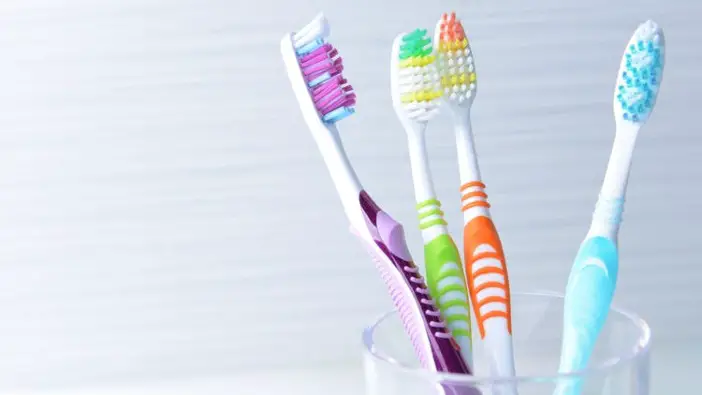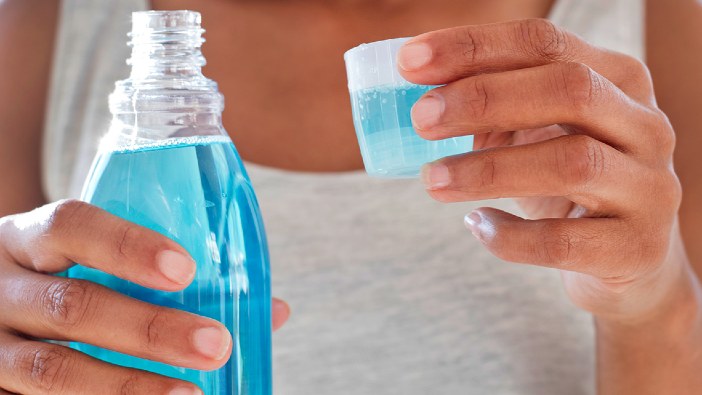It might sound gross, but have you ever thought about what is on the surface of your tongue?
Studies have shown that we are constantly shedding millions of bacteria onto the surface of our tongues. Some of these bacteria can cause bad breath and leave you more susceptible to various infections.
Cleaning your tongue is just as important as brushing your teeth or flossing. This is because bacteria and other particles can collect in the cracks of your tongue, making it difficult to taste food properly and resulting in several oral health problems.
Luckily for you, I’m going to share with you different methods and devices to use in cleaning your tongue to ensure you can have a nice and fresh breath every minute of the day.
How to Clean Your Tongue
Different foods have different tastes because they contain various chemical compounds called “tastants” that we are able to detect with our tongues.
Your tongue has between 5000 to 10000 taste buds, which allows you to experience tastes that are sweet, sour, salty, and bitter. They are also the reason why you do not enjoy the same flavors as others.
When food enters your mouth, it dissolves in saliva and then sticks to the top of the tongue, where it is detected by taste buds.
For some people, this can be a very unpleasant experience because their tongue is dirty and covered in bacteria, which can cause bad breath too.
Cleaning your tongue is one of the most effective ways to remove foul taste, remove bacteria, and prevent many health problems.
There are many devices that can be employed for this purpose. Such as your toothbrush, a mouth rinse, or a tongue scraper.
Besides, cleaning your tongue is just as easy as cleaning your teeth and I’m going to show you just how to do that.
How to Clean Your Tongue Using a Tongue Scraper

One way to remove the unwanted bacteria on your tongue is by scraping it with a tongue scraper.
A tongue scraper is a tool that scrapes and removes the bacterial build-up on the surface of your tongue, literarily scraping off some of the dead skin on your tongue as well.
Tongue scrapers can be made of metal or plastic and come in different shapes and sizes, making it easier for you to choose the one that best suits you.
Scraping your tongue once a day helps you to remove food particles, bacteria, and dead cells that can accumulate on your tongue.
- Extend your tongue and place the scraper at the back of your tongue.
- Scrape your tongue from back to tip gently.
- Scrape severally in different directions to cover the whole tongue.
- Spit out the saliva and carefully rinse your mouth.
- Rinse the tongue scraper and repeat.
Be careful not to ingest the saliva build-up in your mouth as they contain the bacteria you want to get rid of.
When you’re through, flip the scraper over and use the other end to scrape out any remaining bits of food to ensure a thoroughly cleaned tongue. You can do this in the morning, before or after meals.
Read also: Teenage Dream: 14 Skincare Tips To Help You Get Clear Skin
How to Clean Your Tongue Using a Toothbrush

Yes, you might brush your teeth twice a day, but do you also know that your toothbrush can also be used to brush your tongue?
You can use a toothbrush with soft bristles as a gentler alternative to a tongue scraper. You can just brush your tongue while brushing your teeth without going through the stress of getting your tongue scraper out.
Using your toothbrush is perfect if you want to scrape your tongue, but you’re already running late for work. Or maybe you’re just lazy like me and need an easier alternative to a tongue scraper.
There are a few simple steps that you can follow to clean your tongue with a toothbrush.
- Gently scrape the surface of your tongue with a toothbrush.
- Use the toothbrush vertically to clean out the many crevices on your tongue.
- Brush all surfaces of the tongue including the sides and back, this will ensure that you have cleaned every possible surface.
- Spit out the saliva and carefully rinse your mouth.
- Rinse your toothbrush after.
Using a toothbrush after every meal is a great way to keep your tongue clean and healthy. It will also make sure that you won’t miss out on all those tasty crumbs and chops.
How to Clean Your Tongue Using an Oral Mouthwash

Maintaining oral hygiene is important as it can prevent tooth decay, gum disease, and other oral diseases. But the most common problem for people with bad oral hygiene is bad breath (also known as halitosis).
This can be because of the bacteria on your tongue. These bacteria consume proteins in the mouth and produce volatile sulfur compounds that make your breath stink.
An oral mouthwash is an ideal way to solve this problem. It helps reduce the number of unhealthy bacteria on your tongue by killing them, it also helps to prevent plaque buildup.
There are many types of these mouthwashes but here are some general guidelines for choosing one:
- Choose a wash that contains chlorhexidine gluconate to kill bacteria that cause bad breath, gingivitis, and other oral diseases.
- Avoid washes with alcohol. The alcohol tends to dry out your mouth further, causing discomfort.
- Choose a wash with fluoride and potassium to prevent tooth decay, cavities and to strengthen your teeth.
- Choose a wash with astringent salt to neutralize bad breath.
A good oral mouth wash will have a minty flavor that will freshen your mouth and act as natural toothpaste with benefits. It also helps get rid of food particles in the mouth that can cause an unpleasant taste or smell.
See also: 12 Easy and Natural Tips on How to Get Soft Lips at Home
Benefits of Cleaning Your Tongue
Tongue cleaning is an important act of oral hygiene that has many benefits, such as:
Prevent Tooth Decay
Not cleaning your tongue could be the reason for your decaying tooth. Cleaning your tongue regularly prevents the growth of harmful bacteria on your tongue, which can cause plaque, tooth decay, gum diseases, and other oral diseases.
Enhanced Appearance
Bacteria, food particles, and dead cells that build up to form a plaque on your tongue can cause a dark or white patch on the tongue. Cleaning your tongue is essential for an enhanced nice-looking pink tongue.
Decreased Bacteria
Bacteria grow and build upon the surface of your tongue after eating. Hence, leading to oral diseases and bad breath.
Cleaning your tongue regularly is a good way to remove bacteria build-up and plaque. Thus decreasing the number of bad bacteria you have on your tongue.
Improved Taste
When bacteria build up on your tongue, you find yourself not enjoying foods the same way as others. Your favorite food tastes like something else and you just don’t feel that delight anymore.
Cleaning your tongue at least twice a day will remove the germs on your tongue. Thus improving your sense of taste.
Fresh Breath
Did you notice there are certain folks you talk to and they just leave you breathless due to their unpleasant mouth odor? The truth is mouth odor doesn’t just happen; most times it’s because of poor oral hygiene.
An unpleasant odor in your mouth can be a result of the build-up of bacteria and dead cells on your tongue. Cleaning your tongue properly will ensure you have a fresh breath.
See also: 10 Best Body Moisturizers for a Defined & Flawless Skin
When You Should See a Dentist
To avoid having an unhealthy tongue. Ensure to maintain proper oral hygiene by cleaning your tongue at least twice a day. Then visit your dentist every six months for a professional examination.
Any visible changes on your tongue should be a major health concern. You should see a dentist immediately if you have any of these symptoms:
White Patches
White patches on any part of your tongue most times indicate underlying health issues. These issues can be minor or sometimes severe.
The build-up of bacteria, food particles, and debris can cause your tongue to turn white.
Red Tongue
A healthy tongue is pink in color; a change in the color of your tongue can be a sign of oral disease or other medical conditions. Likewise, a red tongue could be the result of a bacterial infection, vitamin deficiency, or cancer.
Black or Hairy Tongue
A black or hairy tongue is a medical condition in which black hairy patches appear on the surface of your tongue. This happens when dead cells that fail to shed accumulate on the surface of your tongue to form dark patches.
Bacteria can also grow on the dead cells, giving your tongue a hairy appearance. This condition is mostly caused by poor oral hygiene and can lead to severe health conditions.
Sores, Lumps, and Bumps
Sores, lumps, and bumps on your tongue may develop as a result of stress, allergies, menstrual cycle, or bowel diseases.
It could also be a sign of immune disorders like HIV/AIDS or tongue cancer. Most times, tongue cancer appears as a sore on your tongue that doesn’t heal or go away.
You should also see a dentist immediately. If you feel a pain that doesn’t go away on your tongue or any part of your mouth
Frequently Asked Questions

Can I clean my tongue with an electric toothbrush?
Yes, absolutely. Using an electric toothbrush is an excellent way to remove bacteria buildup, food particles, and dead cells that can accumulate on your tongue.
An electric toothbrush, with finely textured bristles, gently and effectively cleans the residue of bacteria, dirt, and white paste on your tongue. Leaving you feeling fresh and clean.
Why is my tongue white?
White tongue is usually a result of poor oral hygiene. It is caused when bacteria, food particles, and dead cells get in between the papillae on the surface of your tongue.
These papillae (tiny little bumps on your tongue) grow large and get inflamed, creating a visible white patch on your tongue. Dehydration, alcohol, smoking, and certain medical conditions such as cancer can also cause white tongue.
How do I know if I’m cleaning my tongue properly?
A healthy tongue is clean and usually pink in color with the absence of white or dark patches. Any visible change in the color of your tongue, white or dark patches on any part of your tongue, can be a sign that you’re not cleaning your tongue properly.
Other symptoms like pain, irritation, lumps, and bumps on your tongue are also red flags. Visit a dentist as soon as possible to get it checked.
Conclusion
Unfortunately, tongue cleaning and scrubbing are seen as a mere issue. An act reserved for the “old-country folks,” or folks at your office who smoke and don’t wear deodorant.
When you eat lots of acidic or sweet food high in sugar. Bacteria begin to grow on your tongue and start accumulating.
The bacteria on your tongue mix with food particles and dead cells to consume proteins in your mouth and produce harmful sulfur compounds that make your breath stink. This ultimately leads to bad breath and can lead to severe health problems.
Tongue cleaning is a safe, natural way to remove bacteria, food particles, and dead cells from the surface of your tongue, using a tongue scraper, toothbrush, or mouthwash. Indeed, it is a safe way to promote oral health and hygiene.
Cleaning your tongue is a necessary habit that can help improve your oral health and your breath.
Thanks for reading.
Africana fashion provides you with beauty and wellness articles to improve your lifestyle







